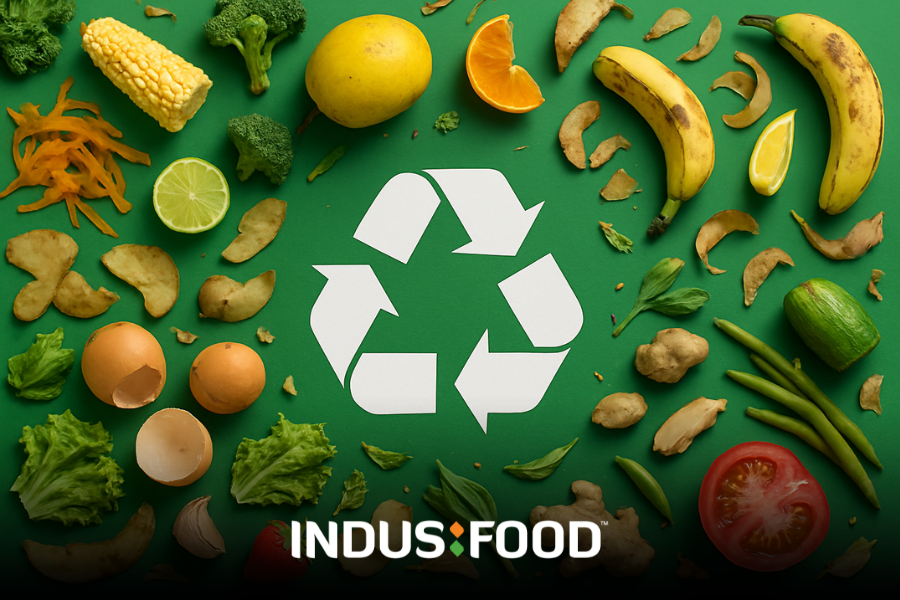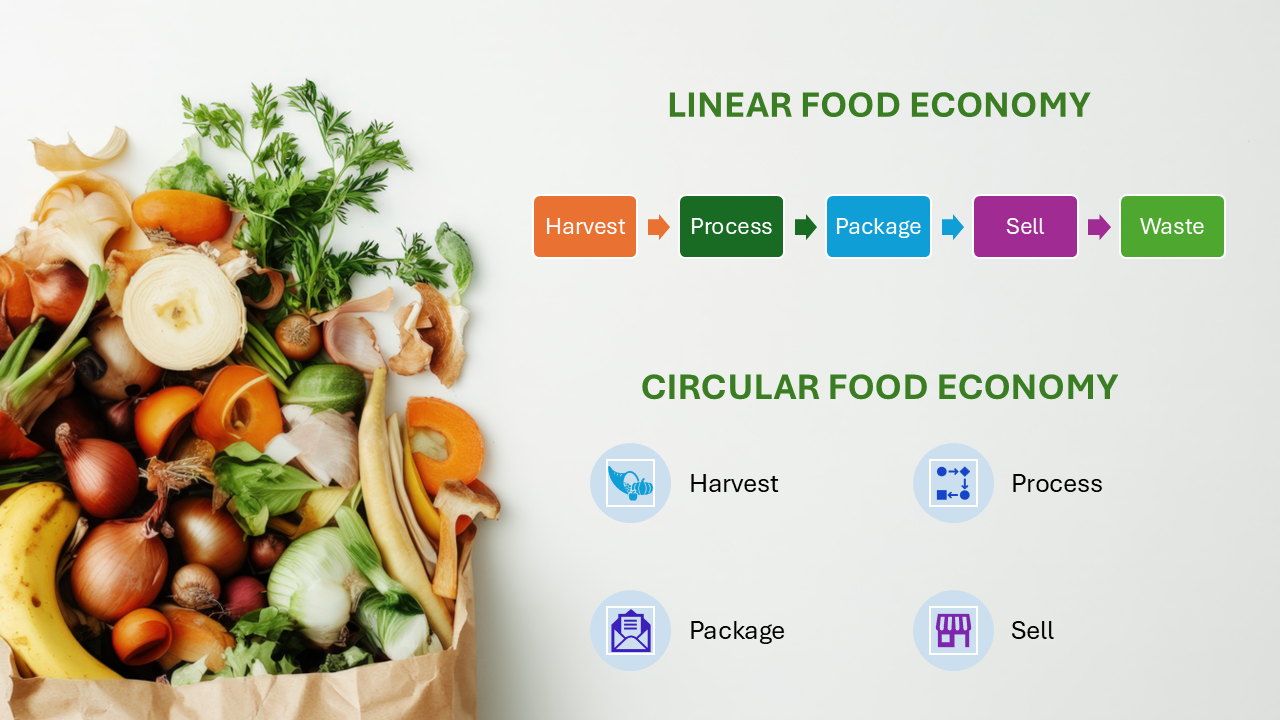
In the past few years, the global food processing industry has experienced significant growth, becoming a pivotal component of international trade. This has been driven by a number of factors. Increasing urbanization and hectic lifestyles have led to a higher demand for convenient and ready-to-eat food products, boosting the processed food sector.
Innovations in food processing technologies have enhanced production efficiency, shelf-life, and safety of processed foods, making them more appealing to consumers globally. More generally, liberalization of trade policies and reduction in tariffs have facilitated the exchange of processed food products across borders, expanding market reach.
The global food processing market was valued at approximately US$ 169.4 billion in 2022 and is projected to reach US$ 301.1 billion by 2031, growing at a CAGR if 6.6%. Developed economies are importing a higher proportion of processed food, comprising about 48% of their total food imports, compared to around 35% for developing economies (UNCTAD).
The US has seen its processed food product exports grow from approximately US$ 28.6 billion in 2015 to about US$ 38.8 billion in 2024. India’s exports of prepared foodstuffs (HS 16-22) had reached US$ 8.1 billion in 2023-24, at a five-year CAGR of 12.5%.
As the industry is growing to meet the growing demand, it is also precipitating a huge emergent challenge that we need to address – sustainability. Neglecting this area in post-farming stages of food production—such as processing, packaging, distribution, and retail—can lead to significant environmental, economic, and social challenges.
Food systems contribute approximately 26% of global greenhouse gas emissions, with processing, packaging, and transportation accounting for a substantial portion (ourworldindata.org) . Globally, one-third of food produced for human consumption, worth approximately $940 billion, is lost or wasted annually (shapiroe.com).
Food and food packaging materials constitute almost half of all municipal solid waste in the United States, highlighting the environmental burden of single-use packaging (foodprint.org). Production and disposal of food packaging consumes significant raw materials, energy, and water, leading to resource depletion and environmental degradation (link.springer.com). Unsustainable practices in processing and distribution can lead to increased operational costs due to inefficiencies and waste management expenses (mdpi.com). Furthermore, improper disposal of food waste can lead to environmental contamination, affecting air and water quality, and posing health risks to communities (epa.gov).
The UN’s SDGs have prioritised halving global per capita food waste at retail, consumer, production, and food supply chain by 2030. Policymakers and research institutions across the US, EU, China, and other regions are increasingly driving circular economy approaches in the food industry to minimize waste, promote resource efficiency, and build sustainable food systems.
In the European Union (EU), the Farm to Fork Strategy under the European Green Deal aims to halve food waste per capita by 2030 and promote bio-based packaging, closed-loop supply chains, and food waste valorization into animal feed or bioenergy. The United States Department of Agriculture (USDA) has partnered with the Environmental Protection Agency (EPA) to implement the Winning on Reducing Food Waste Initiative, encouraging surplus food donation, upcycling of by-products, and food waste recycling into compost or energy.
In China, the government launched the Clean Plate Campaign to curb food waste in food services and restaurants while also promoting agricultural circular economy models that convert food processing waste into biofertilizers or animal feed. Countries like Japan have implemented the Food Recycling Law, mandating food businesses to recycle food waste into feed and fertilizer, aiming for a 95% recycling rate. Meanwhile, research institutions such as the Ellen MacArthur Foundation (UK) and Rethink Food (USA) are pioneering frameworks for circular food systems, emphasizing regenerative agriculture, low-waste supply chains, and by-product valorization.
According to the IPCC, India could see a 10-30% decline in rice production and a 25- 70% fall in maize production with a 1-4-degree rise in temperature in the 21st century.
In a paper developed by Economic Advisory Council to the PM, India, it is discussed how agriculture accounts for 15% of India’s GDP and 43% of employment and is the most vulnerable to climate change. Frequent heat waves, extreme rainfalls, water scarcity and soil degradation directly impact the agriculture output and incomes in India. According to the IPCC, India could see a 10-30% decline in rice production and a 25- 70% fall in maize production with a 1-4-degree rise in temperature in the 21st century.
These policy-driven and research-backed approaches are laying the groundwork for a zero-waste food economy, influencing global food brands to adopt circular business models that reduce environmental impact while driving profitability.

A circular economy in the processed food industry (from post-harvest to end-retail) focuses on minimizing waste, maximizing resource efficiency, and regenerating natural systems. Following are some practical ways in which these principles can be implemented:
1. Reducing Post-Harvest Losses (Farm to Processing Unit)
Challenge: A significant portion of fresh produce is lost due to poor storage, transportation, and handling.
Circular Solutions:
For example Imperfect Foods (USA) sources and sells “ugly” produce that would otherwise go to waste. KisanKonnect (India) ensures minimal loss by directly connecting farmers with retailers.
2. Resource-Efficient Food Processing (Processing to Packaging)
Challenge: Food processing consumes large amounts of water, energy, and raw materials, often generating waste.
Circular solution:
PepsiCo India uses potato peels from Lay’s chips production to generate biogas for plant operations. Breweries like Carlsberg repurpose spent grain into animal feed or biofuel.
3. Sustainable Packaging (Packaging to Distribution)
Challenge: Processed foods often use plastic packaging, contributing to plastic pollution.
Circular Solution:
Loop by TerraCycle allows brands to offer products in reusable packaging with a return-and-refill system. Amul (India) uses glass bottles for flavored milk in certain markets.
4. Minimizing Retail Food Waste (Distribution to Retail)
Challenge: Retailers discard unsold or nearing-expiry products, contributing to large-scale food waste.
Circular Solution:
Dynamic Pricing: Offer dynamic discounts based on the shelf life of perishable items.
Surplus Redistribution: Donate surplus or close-to-expiry products to food banks or NGOs.
Food Waste Valorization: Convert expired food into animal feed, compost, or biogas.
Example:
Too Good To Go (Europe) sells surplus food from retailers/restaurants at discounted prices. Reliance Smart (India) offers dynamic discounts on nearing-expiry food items. Zomato has started selling cancelled orders at a discount.
5. End-of-Life Management (Post-Retail to Disposal)
Challenge: Once food reaches consumers, packaging and food waste often end up in landfills.
Circular Solution:
Zomato (India) partners with NGOs to collect surplus food from restaurants for donation. Danone (France) collects yogurt containers for recycling into new packaging.
6. Data-Driven Supply Chains (Across the Value Chain)
Challenge: Lack of visibility in the supply chain leads to inefficiencies, waste, and overproduction.
Circular Solution:
IBM Food Trust uses blockchain to track and optimize the food supply chain. Otipy (India) uses demand-based harvesting to minimize post-harvest losses.
Pravin Masalewale (Suhana), a 60-year-old spice company, embarked on its journey towards net-zero emissions and zero waste in 2014. Recognizing the potential of circular economy principles, the company has successfully managed industrial waste — including biodegradable and plastic waste generated from its processes and packaging — through simple yet effective techniques such as reuse, recycling, refurbishing, and upcycling.
Anand Chordia, Director of Technology and Innovation at Suhana Pravin Masale Wale, states:
“While many view sustainability as an expense, we see waste as a resource in the wrong place, focusing on turning it into wealth.”
By applying scientific methods, Suhana has managed to turn waste into value-added products, providing the company with a competitive edge in the market. Regular waste audits have enabled the company to identify and solve problems efficiently, further driving their sustainability efforts. This commitment has not only allowed Suhana to optimize food waste management but has also inspired over 20,000 entrepreneurs and industry professionals who have visited its facility to adopt similar sustainable practices.
The company has made significant strides in energy efficiency, with several of its manufacturing units achieving net-zero energy status. One of its units has received an IGBC (Indian Green Building Council) certification, while three others have been awarded platinum green building ratings. Beyond industrial sustainability, Suhana is also addressing agricultural sustainability by converting barren land into pesticide-free food forests, promoting eco-friendly farming practices, and working towards reducing residual pesticide limits. Watch the film below for more on how they achieved this feat!
Understanding the critical role of technology in driving sustainable operations, Suhana advocates for smart technologies like IoT, AI, and Industry 4.0 to optimize processes, enhance decision-making through real-time data, control costs, and improve quality management. This integration of technology has further strengthened their sustainability mission.
Suhana firmly believes that the FMCG and manufacturing sectors in India — not limited to food — must increasingly adopt circular economy practices to minimize waste, reduce environmental impact, and enhance long-term profitability. According to Mr Chordia, true sustainability lies in balancing environmental, economic, and financial responsibilities to create maximum value for the business, the planet, and future generations.
The transition towards a circular economy in food processing is no longer an option but a necessity. As global food demand continues to rise, it is imperative for food processors to rethink their approach to resource utilization, food waste management, and product life cycles. Embracing circular economy practices not only mitigates environmental impact but also drives long-term profitability and innovation.
By fostering collaboration across the value chain and investing in sustainable solutions, the food processing industry can play a pivotal role in building a more sustainable future. Now is the time for businesses to seize this opportunity, reimagine their processes, and lead the way toward a circular and sustainable food ecosystem.
Read More:
A circular food economy is a closed-loop system where food and by-products are recycled and reused—minimizing waste, regenerating nutrients, and maintaining continuous resource flow through upcycling, composting, and nutrient cycling.
ood systems contribute ~26% of global greenhouse gas emissions, and about one-third of produced food (~US $940B) is wasted annually. Addressing waste across food processing, packaging, and distribution is vital for sustainability.
© Trade Promotion Council of India. All Rights Reserved.